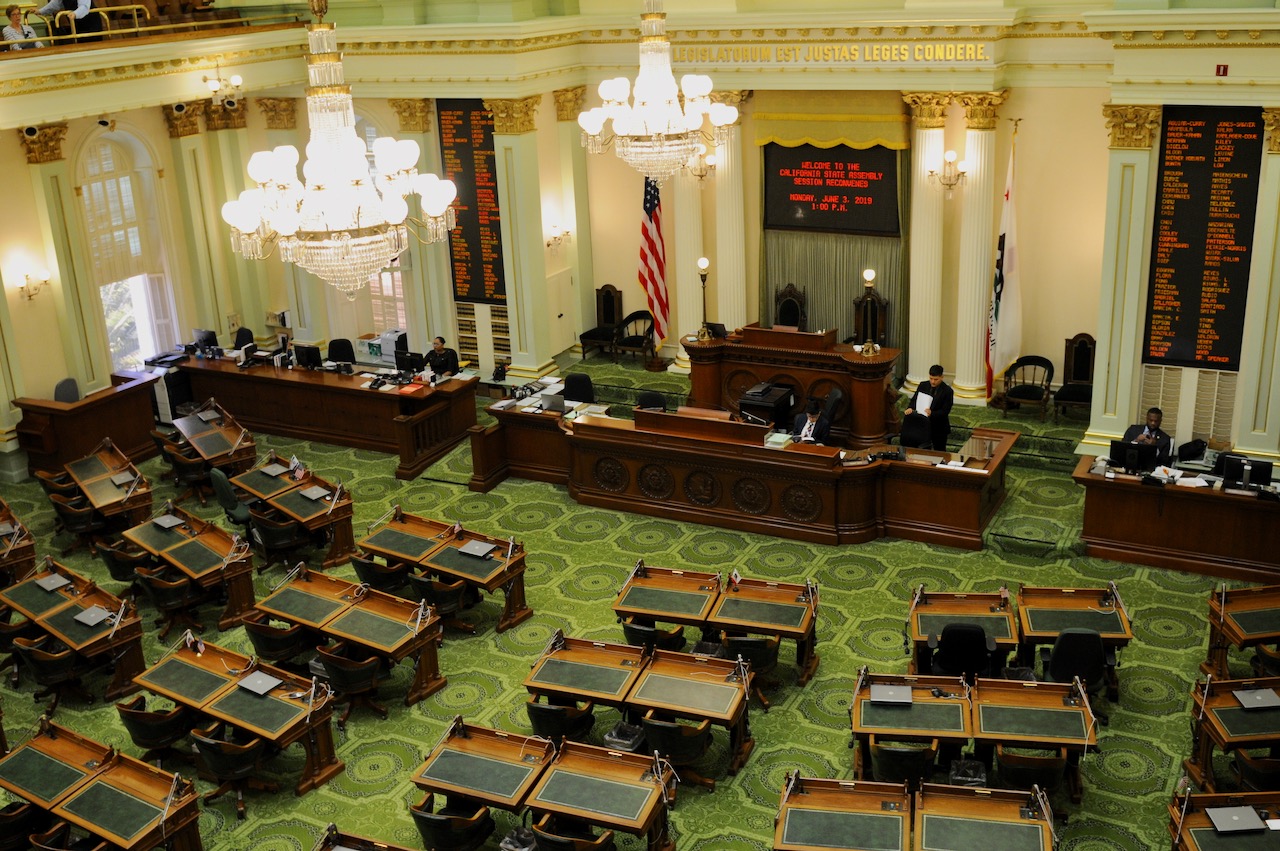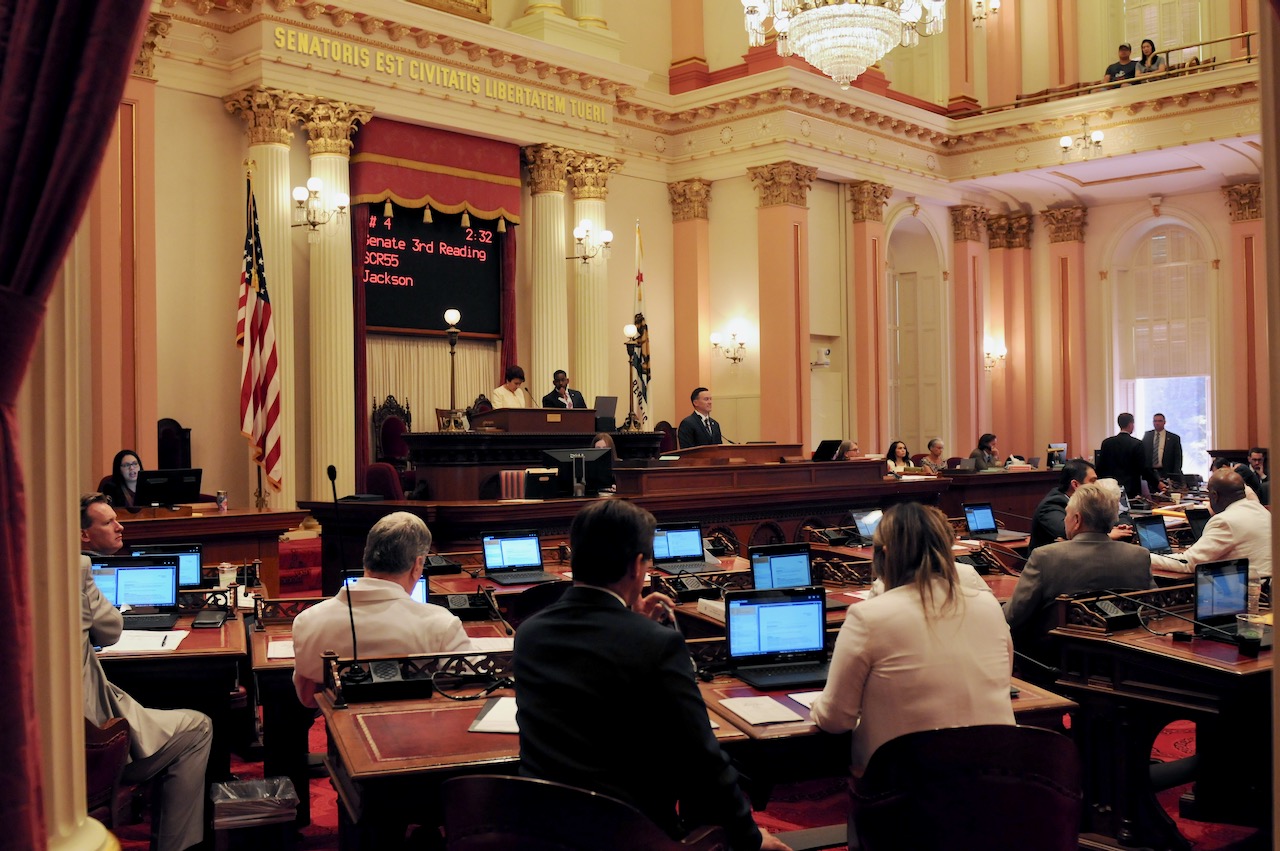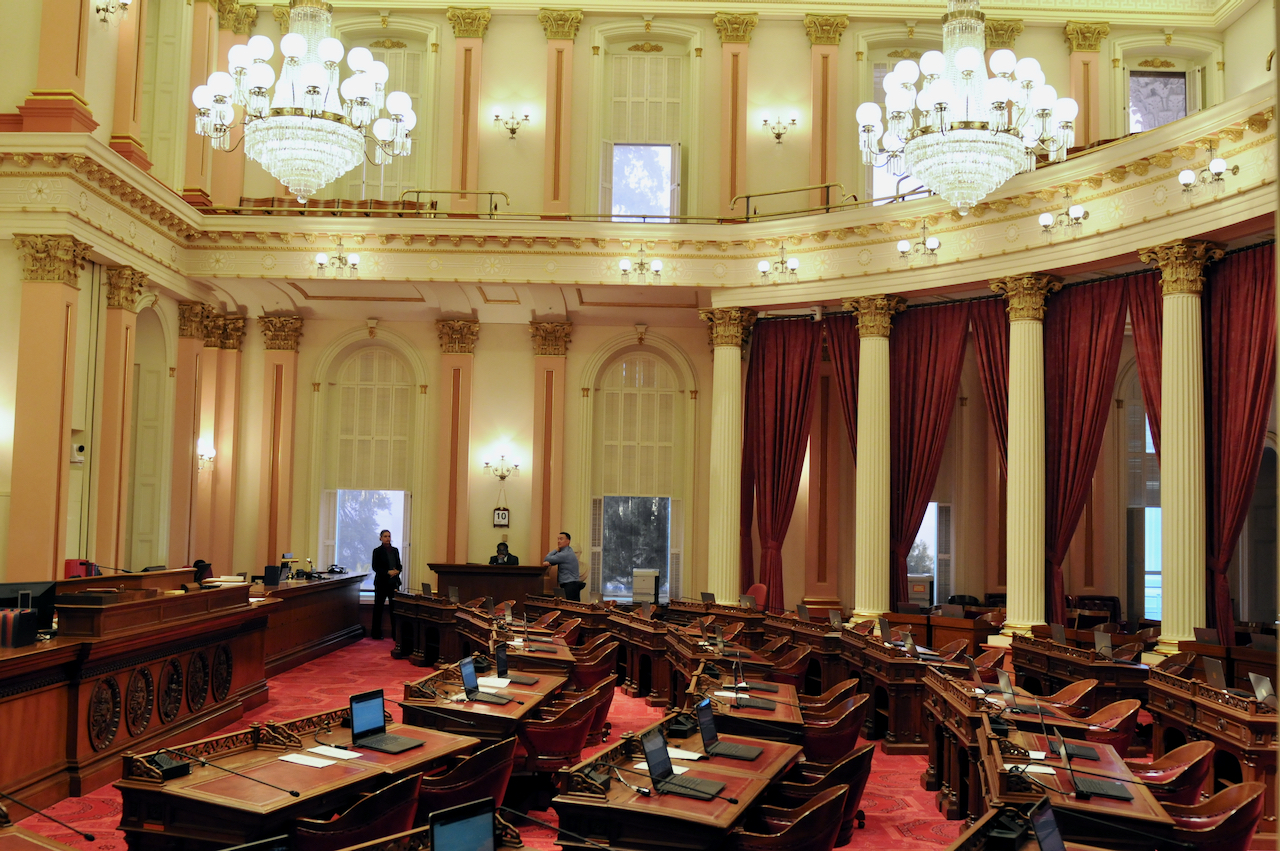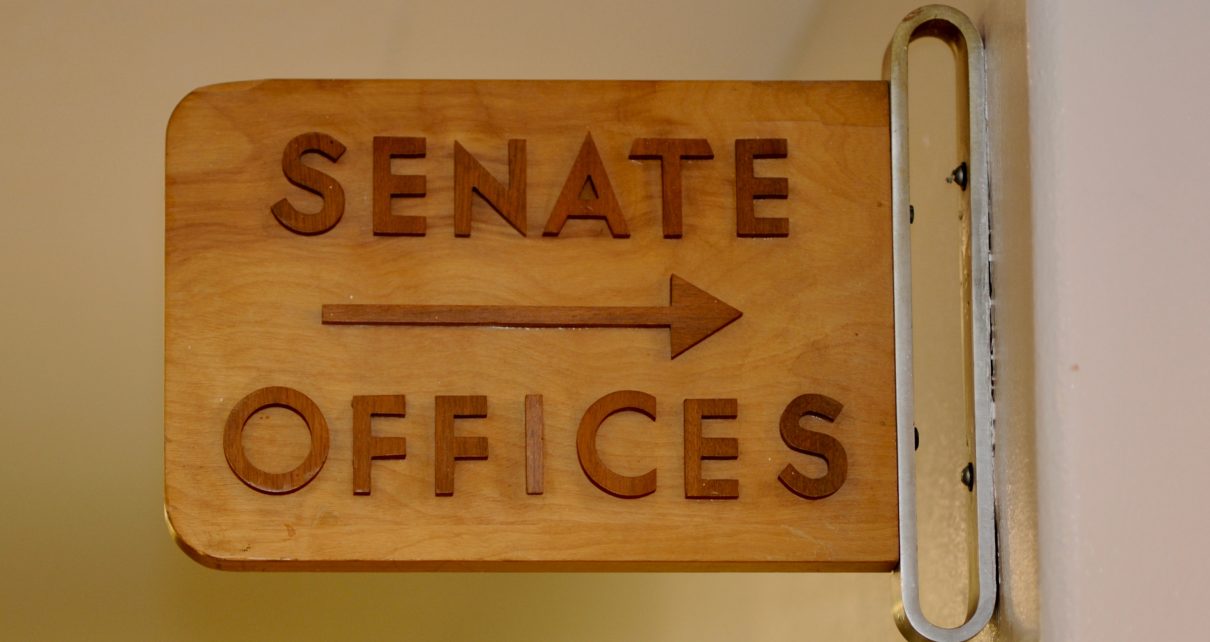
Key Provisions of the Legislature’s Internal Rules – The Joint Rules – Part II
All meetings of the Budget Bill conference committee must be open and readily accessible to the public
By Chris Micheli, April 10, 2020 6:40 am
This is Part ll of Key Provisions of the Legislature’s Internal Rules – The Joint Rules – Part I is here.
Printing of the Daily File – A Daily File of bills is printed each day for each house when the Legislature is not in joint recess or on days when a house does not meet. (16)
Printing of History – Each house must print weekly a complete Weekly History of all measures acted upon by the house and its committees. The History shows the action taken on each measure. During the intervening time, a Daily History must be published. (17)
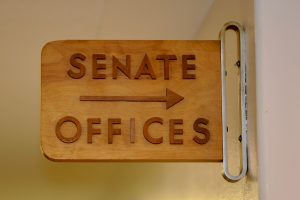
Authority for Printing Orders – State Printer can only print those items upon written order by the Senate Secretary or Assembly Chief Clerk. All bills for printing must be presented to the State Printer within 30 days. (18)
Secretary and Chief Clerk to Keep Records – Senate Secretary and Assembly Chief Clerk keep a complete and accurate record of every action taken on every bill. (19)
Secretary and Chief Clerk Shall Endorse Bills – Senate Secretary and Assembly Chief Clerk endorse on every original or engrossed bill a statement of any action taken on the bill. (20)
After a Bill Has Been Passed by the Senate or Assembly – When a bill has been passed by either house, it must be transmitted to the other house promptly unless a motion to reconsider has been made. The procedure for referring bills to committees is determined by the rules of each house. (21)
Messages to Be in Writing under Proper Signatures – Messages from one house to the other are in writing and under signature by either the Senate Secretary or the Assembly Chief Clerk. (22)
Consent Calendar: Uncontested Bills – Each standing committee may report any uncontested bill with a recommendation to place the measure on the consent calendar. “Uncontested bill” means a bill that (a) receives a do-pass or do-pass-as-amended recommendation from the committee to which it is referred, by unanimous vote of the members present provided a quorum is present, (b) has no opposition expressed by any person present at the committee meeting with respect to the final version of the bill as approved by the committee, and (c) prior to final action by the committee, has been requested by the author to be placed on the Consent Calendar. (22.1)
Consent Calendar – A bill certified by a committee chair as an uncontested bill is placed on the consent calendar. Any consent calendar bill that is amended from the floor is no longer a consent calendar bill and is returned to Third Reading File. Upon objection of any Member to a bill on the consent calendar, the bill is returned to the Third Reading File. No consent calendar bill can be considered for adoption until the second legislative day. (22.2)
Consideration of Bills on Consent Calendar – A bill on the consent calendar is not debatable, but the Senate President pro Tempore or Assembly Speaker will allow a reasonable time for questions from the floor and must permit a proponent of the bill to answer the questions. Prior to voting on the first consent calendar bill, the presiding officer will call that fact to the attention of the house. The consent calendar is considered as the last order of business on the Daily File. (22.3)
Procedure on Defeat of More Than Majority Bill – When a bill requires more than a majority vote for passage and it fails to receive the necessary number of votes, an amendment to remove the higher vote threshold section(s) is in order prior to consideration of further business. If that amendment is adopted, the bill is reprinted and returns to the Daily File in the same place. (3.5)
Enrollment of Bill After Passage – After a bill has passed both houses, it is printed in its enrolled form and is compared by the Engrossing and Enrolling Clerk and the committee in the original house to determine that it is in the form approved by both houses. Then the enrolled bill is signed by the Senate Secretary and Assembly Chief Clerk and presented without delay to the Governor. A record is entered in the Daily Journal. After enrollment and signature, constitutional amendments and resolution are filed without delay with the Secretary of State and recorded in the Daily Journal. (24)
Amendments to Amended Bills Must Be Attached – Whenever a measure has been amended in the other house, it must be immediately reprinted by the house that made the amendments(s). One copy of the amendment(s) is attached to the bill and endorsed “adopted”. When concurred in by the house, it is endorsed “concurred in” and the endorsement is signed by the Senate Secretary or Assembly Chief Clerk. An amendment to the title of a bill does not necessitate reprinting. (25)
Amendments to Concurrent and Joint Resolutions – When a resolution is amended, and the only effect is to add coauthors, the resolution may not be reprinted unless specifically requested by a coauthor. (25.5)
To concur or Refuse to Concur in Amendments – If one house amends and passes a bill from the other house, that house must concur or refuse to concur in the amendments. If the house of origin concurs, then the bill is ordered to enrollment. (26)
Reference to Committee – Whenever a bill is returned to its house of origin for a concurrence vote, the Legislative Counsel must promptly prepare a brief digest summarizing the effect of the amendment(s) made in the other house. That digest is printed in the Daily File immediately. A motion to concur or not concur is not in order until the Legislative Counsel’s Digest has appeared in the Daily File or an analysis of the bill has been prepared and distributed. If the Digest disclosed that the amendment has made a substantial substantive change in the bill as first passed by the house of origin, a Senate bill is referred to the Senate Rules Committee, or an Assembly bill may be referred by the Speaker to the appropriate standing committee. Upon receipt of the bill, the committee by a majority vote can recommend concurrence or non-concurrence in the amendment, or can hold the bill in committee. This rule may be dispensed with in its house of origin upon a majority vote of Members. (26.5)
Concurring in Amendments Adding Urgency Section – When a bill has been amended in the other house to add an urgency clause, the urgency clause must first be read and put to a vote. If passed by a 2/3 majority vote, the house approves the urgency clause, and then determined whether to concur in the amendment. If either vote fails to achieve a 2/3 vote, then there is a refusal to concur in the amendment(s). (27)
When Senate or Assembly Refuses to Concur – If either house refuses to concur in amendments to the bill made by the other house, and the other house is notified of the refusal to concur, a conference committee must be appointed for each house. The Senate Rules Committee and the Assembly Speaker each appoint three Members from their respective house and each house is so notified. (28)
Committee on Conference – In appointing conferees, the Senate Rules Committee and Assembly Speaker must each select two Members from those voting with the majority about which the difference in the bill has arisen, and the other member from the minority. That determination is based upon how the Member votes on the appropriate rollcall. (28.1)
Meetings and Reports of Committees on Conference – The first Senator named on the conference committee and first Assembly Member named are the respective chairs of the conference committee. The chair from the bill’s house of origin arranges the time and place of the meetings and prepares any reports. A conference report requires at least two affirmative votes from the Assembly Members and the Senators, in which case the report is submitted to both the Assembly and Senate. A conference report is not subject to amendment. If either house refuses to adopt the report, the conferees are discharged and other conferees are appointed, except that no more than three conferees can be discharges and appointed on any one bill. The same legislator cannot be appointed to another conference committee on the same bill. A conference report must be in writing and requires the signatures all each Assembly Member and each Senator who consents to the report, as well as those Members who dissent. A dissenting report can be attached to the conference report. The vote on the conference report is the same as is required by the Constitution, statute or rule. Upon adoption of the conference report, it is deemed the vote on final passage of the bill. (29)
Conference Committees – All meetings of the Budget Bill conference committee must be open and readily accessible to the public. Any other conference committee on any bill may not meet or act on the bill except in a meeting that is open and readily accessible the public unless Legislative Counsel determines it is nonsubstantive. Legislative Counsel notes on the face of the report whether the amendments are substantive or nonsubstantive. The conference committee chairs must give notice to the File Clerk of the respective houses on any meetings. Notice must be provided at least one calendar day prior to the meeting, except the notice is not required for a meeting of the Budget Bill conference committee. But every effort must be made to inform the public that a meeting has been called. This rule can be waived, but the house’s policy committee must be immediately notified of the meeting of the conference committee. The Budget Bill conference committee must submit its report to each house no later than 15 days after the Budget Bill has been passed by both houses. If not, the conference committee is deemed to have reached no agreement. The Budget Bill conference committee may only consider differences between the Assembly and Senate versions and may not approve any item of expenditures or control that exceeds that contained in one of the two versions of the Budget Bill. A conference committee on any bill (other than the Budget Bill) may not approve any substantial financial provision in any bill if that financial provision has not been heard by the fiscal committee of each house. Also, a conference committee cannot approve substantial policy changes that have not been heard by the policy committee of each house. (29.5)
Chris Micheli is an attorney and registered lobbyist with the Sacramento governmental relations firm of Aprea & Micheli, Inc. He also serves as an Adjunct Professor at McGeorge School of Law.
- Legislative Policy on Bay Area Pilotage - July 26, 2025
- Small Craft Harbors and Waterways in California - July 25, 2025
- Disability of Parties in Civil Actions - July 24, 2025


